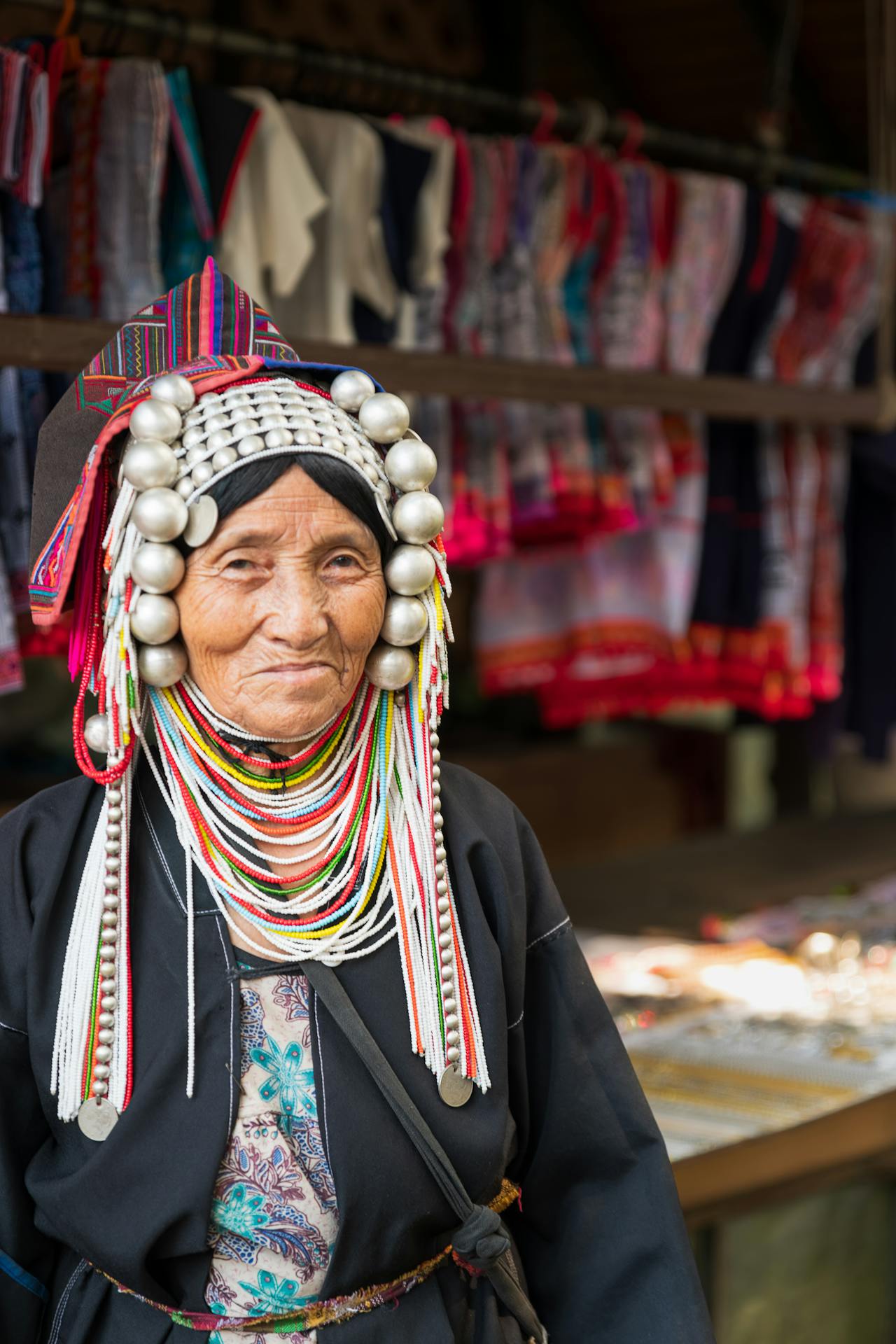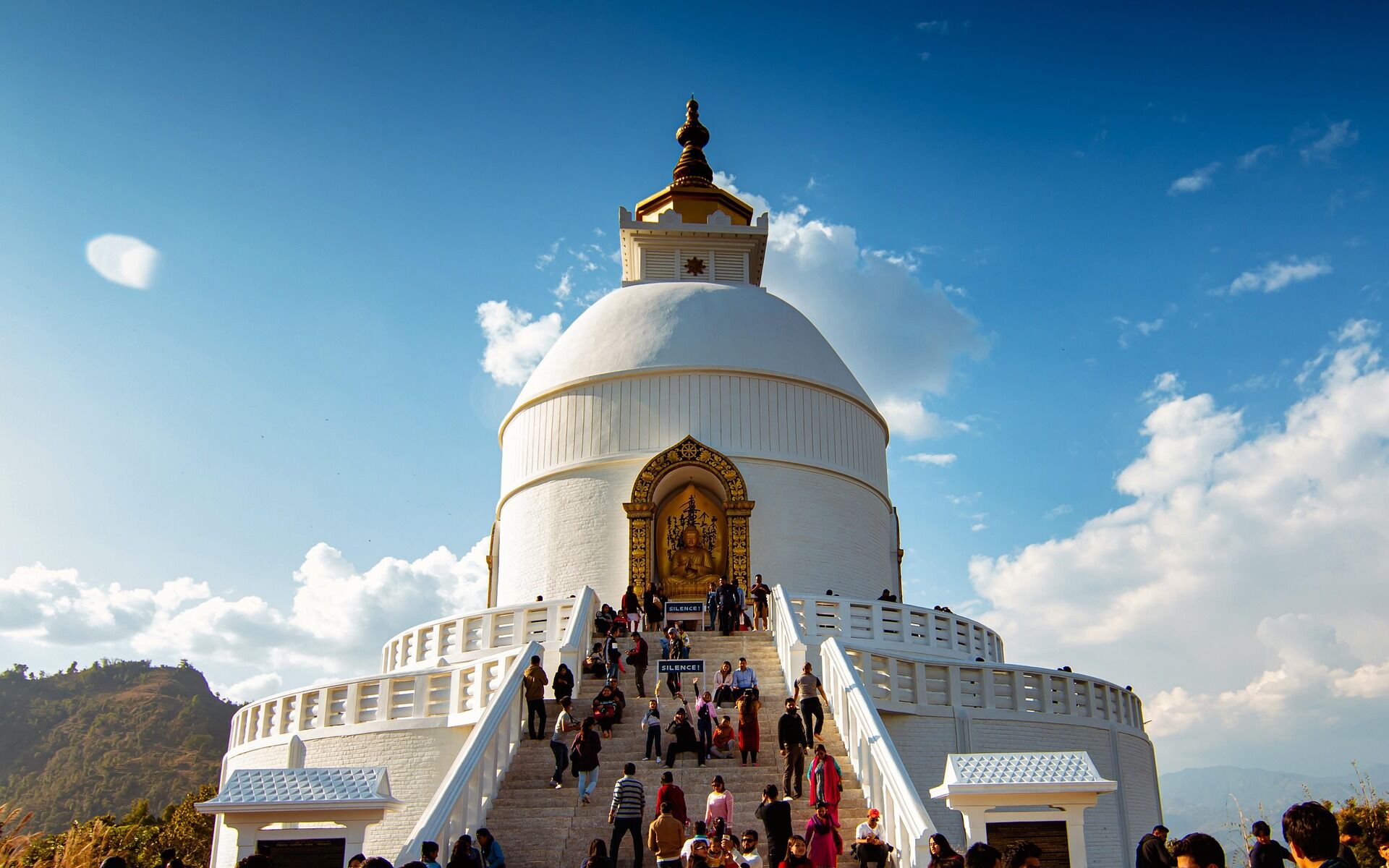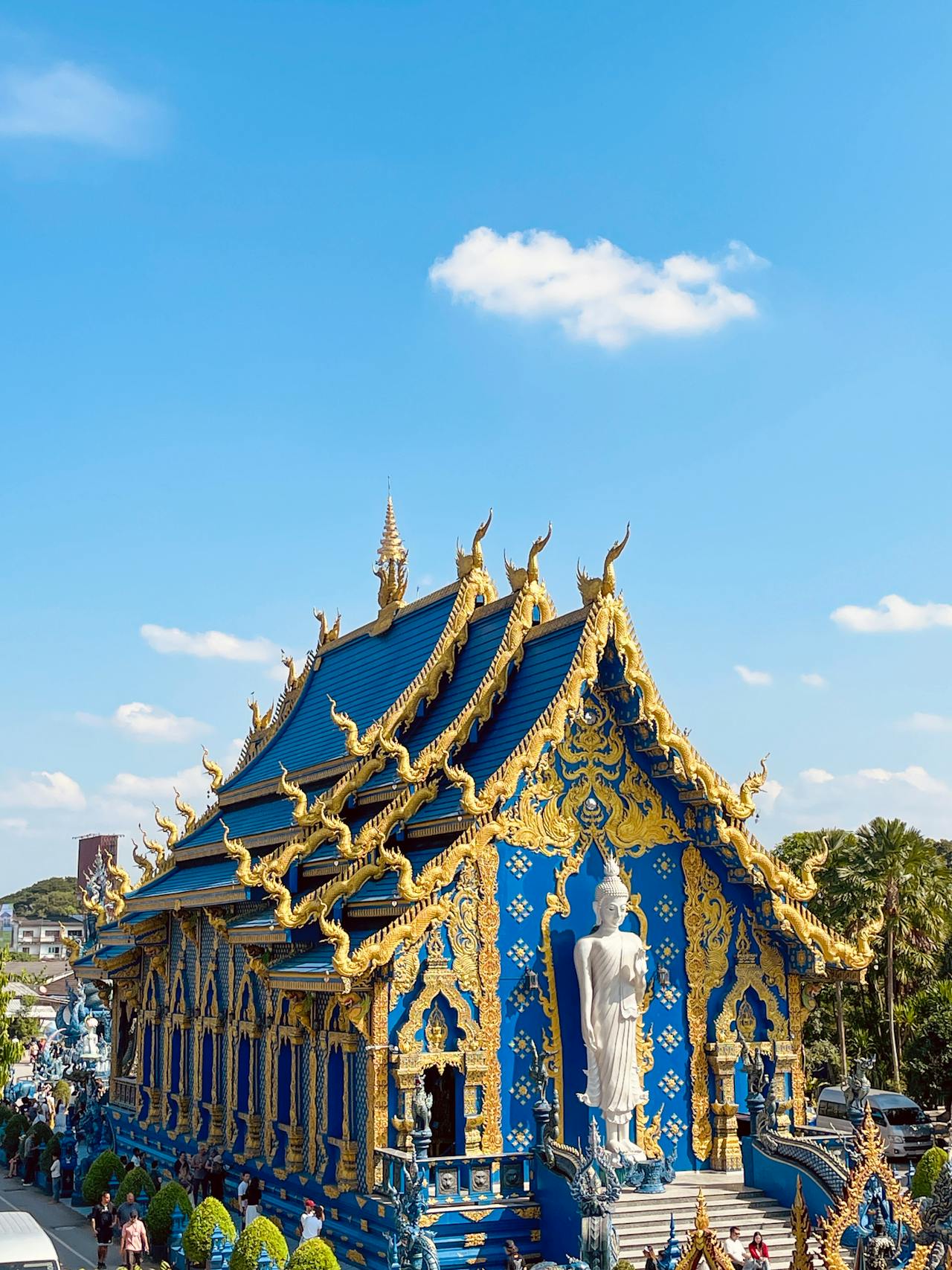Dive into the rich history of Chiang Rai, Thailand with our 2025 guide! Learn about its royal past, cultural etiquette, visiting tips, eco-friendly Chiang Rai Tours, and top providers for a sustainable adventure with Chiang Rai Travel. Plan your journey today!
Author Bio: Written by Tony Bùi, with over 20 years of experience in the travel industry, personally guiding and organizing tours for over 100,000 travellers across Southeast Asia. This guide draws from firsthand insights, guest feedback from Legend Travel Group surveys, and official sources like tourismthailand.org, en.wikipedia.org, thesiamsociety.org, britannica.com, and culturetrip.com. Information based on latest data as of August 18, 2025; verify before travel. Reflects Thailand’s updated travel regulations.
Chiang Rai, Thailand’s northernmost province, is a historical gem nestled in the Kok River basin, renowned for its ancient temples, royal heritage, and vibrant hill tribe culture. Founded in 1262 by King Mangrai, the city served as the first capital of the Lanna Kingdom, leaving a legacy visible in sites like Wat Phra Kaeo (central Chiang Rai) and the Golden Triangle (70 km away). Exploring Chiang Rai’s history with guided Chiang Rai Tours immerses you in its Lanna roots, from the discovery of the Emerald Buddha to its time under Burmese rule (1558–1774) en.wikipedia.org. Less commercialized than Chiang Mai, Chiang Rai, facilitated by trusted Chiang Rai Travel providers, is ideal for history enthusiasts, culture lovers, and eco-conscious travelers. Mastering Exploring Chiang Rai History cultural etiquette ensures a respectful journey, enhancing this historical adventure.
Following Thailand’s updated travel regulations in 2025, Chiang Rai is accessible via Chiang Rai International Airport and regional transport, making historical exploration seamless. This guide blends historical insights, practical visiting tips, and sustainable Chiang Rai Travel ideas for a memorable experience.
Exploring Chiang Rai’s historical sites requires a Thailand visa for some nationalities (visa-free for 30–60 days for most; visa on arrival $50–$60). Entry to key sites like Wat Phra Kaeo or Wat Rong Khun costs $1–$2 (30–60 THB), with donations ($0.30–$1 or 10–30 THB) appreciated. Guided tours cost $15–$60 (500–2,000 THB), and nearby market purchases range from $0.50–$20 (15–600 THB). Sites are accessible by tuk-tuk, songthaew, or tour transport from central Chiang Rai. Verify schedules and visa requirements via tourismthailand.org.
 Immerse in Chiang Rai’s modern historical artistry (Source: Internet)
Immerse in Chiang Rai’s modern historical artistry (Source: Internet)Founding of Chiang Rai (1262): King Mangrai established Chiang Rai as the first capital of the Lanna Kingdom, naming it “the City of Mang Rai.” The city became a cultural and political hub, with Wat Phra Kaeo as a key temple en.wikipedia.org, thesiamsociety.org.
Emerald Buddha Discovery (1432): During King Sam Fang Kaen’s reign, an earthquake revealed the Emerald Buddha in Wat Phra Kaeo’s chedi, cementing Chiang Rai’s spiritual significance. The statue later moved to Chiang Mai and Bangkok en.wikipedia.org.
Burmese Rule (1558–1774): Chiang Rai fell under Burmese control, influencing its culture until King Taksin reclaimed it for Siam in 1774 thaiwaysmagazine.com.
Siamese Annexation (1786–1933): Chiang Rai became a Siamese vassal in 1786, joined the Kingdom of Chiang Mai in 1893, and was declared a full province in 1933 en.wikipedia.org.
Golden Triangle and Opium Trade (20th Century): The region, bordering Laos and Myanmar, was a hub for opium production until the 1970s when the Thai government promoted alternative crops like coffee and tourism topasiatour.com.
Modern Era: Chiang Rai has evolved into a cultural and tourism hub, with landmarks like Wat Rong Khun (opened 1998) showcasing modern Thai artistry timepath.org.
Wat Phra Kaeo: A 14th-century temple where the Emerald Buddha was discovered, central to Chiang Rai’s spiritual history (entry: $1 or 30 THB) en.wikipedia.org.
Wat Phra That Doi Chom Thong: Houses the city pillar (Sadue Mueang), moved in 1992, tied to Lanna traditions (entry: free) en.wikipedia.org.
Wat Rong Khun (White Temple): A modern temple (1998) by artist Chalermchai Kositpipat, blending Lanna and contemporary art (entry: $1.50 or 50 THB) timepath.org.
Golden Triangle: A historical trade hub and former opium center, now a cultural site (entry: free; museum fees $1–$2 or 30–60 THB) britannica.com.
Cultural etiquette ensures a respectful experience at historical sites during Chiang Rai Tours. Here’s your guide, based on current norms as of August 18, 2025:
Greetings: Offer a “sawasdee” (hello) with a slight bow or wai (palms pressed together); use both hands when paying entry fees or offering donations to show respect.
Dress: Wear modest clothing covering shoulders and knees for temples like Wat Phra Kaeo; a lightweight scarf ($3 or 100 THB) aligns with Thai norms and is essential for sacred sites culturetrip.com.
Behaviour: Maintain a quiet demeanor in temples and museums; avoid touching Buddha statues or artifacts; ask permission before photographing monks or sacred spaces; respect local customs at sites like the Golden Triangle. A guest shared: “Respecting temple etiquette made our historical exploration profound.”
Customs: Entry fees are $1–$2 (30–60 THB); donations ($0.30–$1 or 10–30 THB) are appreciated; avoid littering to preserve cultural sites; tipping guides ($0.30–$1 or 10–30 THB) is appreciated but not mandatory.
Tip: Say “khob khun” (thank you) to locals or guides; use eco-friendly practices like carrying reusable water bottles ($4 or 120 THB) to support sustainable Chiang Rai Travel; avoid loud behavior in sacred spaces. Tony Bùi notes: “In 20 years guiding, I’ve seen respectful travellers thrive in Chiang Rai’s historical sites.”
General Tips:
Language: Carry a phrase card ($2 or 60 THB) for Thai basics like “khob khun”; English is limited outside tourist areas but common with Chiang Rai Tours guides culturetrip.com.
Respect: Follow temple and museum rules (remove shoes, cover shoulders); avoid climbing historical structures; support local vendors at nearby markets like Chiang Rai Night Bazaar.
Navigation: Key sites like Wat Phra Kaeo and Wat Rong Khun are in or near central Chiang Rai; use offline maps (Maps.me) with “Chiang Rai” or “Wat Rong Khun” for navigation.
Eco-Tip: Walk or bike ($2–$5/day or 60–150 THB) to sites to reduce emissions, aligning with Thailand’s green tourism goals.
Note: Etiquette reflects current norms; verify site hours via tourismthailand.org.
 Learn Chiang Rai’s royal past with expert guidance (Source: Internet)
Learn Chiang Rai’s royal past with expert guidance (Source: Internet)Below is a curated list of tour options for exploring Chiang Rai’s history, based on latest data from tourismthailand.org, tripadvisor.com, and culturetrip.com. Confirm schedules and prices before booking.
Details: Visit Wat Phra Kaeo, Wat Phra That Doi Chom Thong, and Wat Rong Khun independently; suitable for history enthusiasts; low difficulty.
Schedule: Daily; temples open 8:00 AM–5:00 PM; vibrant during Loy Krathong (November) or Songkran (April).
Cost: Temple entry: $1–$2 (30–60 THB); transport (bicycle: $2–$5/day or 60–150 THB; songthaew: $1–$2 or 30–60 THB); market purchases: $0.50–$20 (15–600 THB).
Location: Central Chiang Rai, Chiang Rai Province.
Eco-Friendly Note: Walk or bike to reduce emissions; avoid littering in cultural areas.
Tip: Check schedules at tourismthailand.org; visit early (8:00 AM) for serenity; a guest noted: “Self-guided historical visits were immersive and authentic.”
Details: 1-day group tour visiting Wat Phra Kaeo, Wat Rong Khun, and Chiang Rai Night Bazaar; includes English-speaking guide, transport, lunch, and entry ($1–$2); low difficulty.
Schedule: Daily; departs 8:00 AM from Chiang Rai hotels; returns by 8:00 PM.
Cost: $15–$25/person (500–800 THB, includes entry).
Pick-up/Drop-off: Hotels in central Chiang Rai.
Eco-Friendly Note: Group transport with fuel-efficient vans minimizes impact; supports local vendors.
Tip: Book via legendtravelgroup.com; a guest noted: “Legend’s tour brought Chiang Rai’s history to life.”
Details: 1-day guided tour visiting Wat Phra Kaeo, Wat Rong Khun, and the Golden Triangle (70 km away); includes English-speaking guide, transport, lunch, and entries ($1–$2); low to moderate difficulty.
Schedule: Daily; departs 7:30 AM from Chiang Rai hotels; returns by 5:00 PM.
Cost: $20–$35/person (600–1,200 THB, includes entries).
Pick-up/Drop-off: Hotels or designated points in Chiang Rai.
Eco-Friendly Note: Small groups reduce environmental impact; supports local communities.
Tip: Book via localvietnam.com (Thailand partner sites); a guest noted: “The combo tour blended history and culture seamlessly.”
Details: 2–3 day tour combining Wat Phra Kaeo, Wat Rong Khun, Golden Triangle, and hill tribe villages; includes English-speaking guide, transport, accommodation, meals, and entries; low to moderate difficulty.
Schedule: Daily; departs from Chiang Rai hotels; returns after 2–3 days.
Cost: $100–$250/person (3,000–8,000 THB, includes entries).
Pick-up/Drop-off: Hotels or custom locations in Chiang Rai.
Eco-Friendly Note: Uses eco-lodges and fuel-efficient transport; supports local communities.
Tip: Book Chiang Rai Tours via legendtravelgroup.com or WhatsApp (+84 825862222); a guest noted: “The multi-day tour was a deep dive into Chiang Rai’s history.”
Self-Guided Exploration: Flexible and authentic, ideal for independent travellers with navigation skills.
Group Historical Tours: Affordable and guided, perfect for cultural and historical insights.
Combo Historical and Golden Triangle Tours: Blend history with regional culture for a comprehensive experience.
Multi-Day Cultural Tours: Offer in-depth exploration of Chiang Rai’s heritage, perfect for history enthusiasts.
Eco-Friendly Note: Group and multi-day tours use fuel-efficient transport, supporting Thailand’s green tourism goals.
 Capture the authentic charm of Chiang Rai’s historical scene (Source: Internet)
Capture the authentic charm of Chiang Rai’s historical scene (Source: Internet)Key historical exploration opportunities include:
Loy Krathong: Typically November, vibrant with floating lanterns; cool and dry (15–25°C); check dates at tourismthailand.org.
Songkran: Typically April, festive with water fights; warm (25–35°C) with occasional showers; check dates at tourismthailand.org.
Year-Round Opportunities: Dry season (November–February, 15–25°C) is best for temple visits; wet season (June–October) suits indoor sites like museums.
Dry season (November–February, 15–25°C) is ideal for mild weather and outdoor historical sites. Hot season (March–May, 25–35°C) requires early visits due to heat. Wet season (June–October, 25–32°C) brings rain (0.3–20 mm/day); focus on indoor museums or covered sites. Morning visits (8:00 AM–11:00 AM) are best to avoid heat or crowds. Verify weather via accuweather.com.
Online Platforms: Book Chiang Rai Tours via tourismthailand.org, legendtravelgroup.com, or localvietnam.com (Thailand partner sites) ($15–$60). Provide pick-up details (e.g., Chiang Rai hotels); e-tickets are acceptable, but printing is recommended.
Tour Operators: Contact agencies like Legend Travel Group for bundled tours with historical sites, Golden Triangle, or villages.
Direct: Purchase entry tickets ($1–$2) at sites like Wat Phra Kaeo or Wat Rong Khun; book guided tours via local agencies (e.g., +66 53 717 400); confirm schedules via tourismthailand.org.
Eco-Tip: Use digital tickets to reduce paper waste; opt for bicycles ($2–$5/day or 60–150 THB) or walking to minimize emissions.
Tip: Book early for festivals (November, April); visit early (8:00 AM); carry small THB notes for entries or donations; confirm visa requirements ($0–$60).
 Seize the cultural essence of Chiang Rai’s history (Source: Internet)
Seize the cultural essence of Chiang Rai’s history (Source: Internet)Pack for a comfortable, sustainable visit:
Documents: Passport (valid 6+ months), Thailand visa if required ($0–$60 or 0–2,000 THB), wallet ($5–$8 or 150–250 THB), tour bookings.
Clothing: Modest clothing covering shoulders and knees; lightweight scarf ($3 or 100 THB) for temple visits; quick-dry clothing and raincoat ($5 or 150 THB) for wet season; comfortable walking shoes ($15 or 500 THB); hat ($5 or 150 THB) for sun protection.
Essentials: Reusable water bottle ($4 or 120 THB); snacks ($0.50–$2 or 15–60 THB, e.g., mango sticky rice); small backpack ($5 or 150 THB); sunscreen ($3 or 100 THB); insect repellent ($3 or 100 THB).
Tech: Phone with translation apps (e.g., Google Translate); charger ($10–$15 or 300–500 THB); local SIM ($5–$7 or 150–200 THB); camera ($50 or 1,500 THB) for photos (with permission).
Eco Items: Reusable tote ($3 or 100 THB) for market purchases; phrase card ($2 or 60 THB) with Thai basics.
Extras: Small THB notes for entries or donations; small first aid kit ($5 or 150 THB); umbrella ($5 or 150 THB) for wet season; money belt ($5 or 150 THB) for valuables. Tip: Pack light (1 small bag, max 5 kg); reusable items support sustainability.
Historical Site Visit Costs
Self-Guided Exploration: Temple entry: $1–$2 (30–60 THB); transport (bicycle: $2–$5/day or 60–150 THB; songthaew: $1–$2 or 30–60 THB).
Group Historical Tours: $15–$25 (500–800 THB, includes entries).
Combo Historical and Golden Triangle Tours: $20–$35 (600–1,200 THB, includes entries).
Multi-Day Cultural Tours: $100–$250 (3,000–8,000 THB, includes entries).
Transport Costs (for Self-Guided Visits)
Bicycle Rental: $2–$5/day (60–150 THB).
Songthaew: $1–$2 (30–60 THB).
Taxi to Golden Triangle: $10–$15 (300–500 THB).
Other Costs
Temple Donations: $0.30–$1 (10–30 THB).
Market Snacks (e.g., mango sticky rice, som tam): $0.50–$2 (15–60 THB).
Souvenirs (e.g., silk, crafts): $1–$20 (30–600 THB).
Total Daily Cost (Per Person)
Budget: $5–$20 (self-guided, entries, snacks, transport).
Mid-range: $15–$35 (group tour, purchases).
Luxury: $35–$60 (private tour, premium souvenirs). Tip: Budget $5–$60 for tours, entries, or transport, and $0.50–$20 for purchases or add-ons.
Historical Tips: Visit Wat Phra Kaeo and Wat Rong Khun early (8:00 AM) for serenity; take photos with permission in non-sacred areas; combine with Golden Triangle for regional history; explore Chiang Rai Night Bazaar for local crafts.
Etiquette: Use “sawasdee” greeting; dress modestly; stay quiet in temples; avoid touching artifacts; respect monks during visits.
Access: Choose self-guided visits for flexibility, group tours for guided insights, or multi-day tours for deeper exploration.
Schedules: Temples open 8:00 AM–5:00 PM; peak crowds in dry season (November–February); book tours early for festivals (November, April).
Sustainability: Use bicycles or walk; carry reusable items; support local vendors with fair purchases.
Navigation: Use offline maps (Maps.me) with “Chiang Rai” or “Wat Rong Khun” for navigation.
Weather: Dry season (Nov–Feb, 15–25°C) is ideal; wet season (Jun–Oct, 25–32°C) suits indoor museums; check forecasts via accuweather.com.
Safety Note: Secure valuables with a money belt ($5 or 150 THB); beware of pickpocketing in Night Bazaar; carry emergency numbers (Police: 191, Tourist Police: 1155).
What is the history of Chiang Rai? Founded in 1262 by King Mangrai as the Lanna capital, it was under Burmese rule (1558–1774), a Siamese vassal until 1933, and a former opium hub in the Golden Triangle en.wikipedia.org.
What are key historical sites in Chiang Rai? Wat Phra Kaeo, Wat Phra That Doi Chom Thong, Wat Rong Khun, and the Golden Triangle britannica.com.
How much are entry fees for historical sites? $1–$2 (30–60 THB); donations ($0.30–$1) appreciated.
How do I book historical tours? Book via tourismthailand.org, legendtravelgroup.com, or local agencies; confirm schedules.
How do I reach historical sites? Walk, bike, or use songthaews from central Chiang Rai; tours include transport.
Are eco-friendly tours available? Yes, group tours with fuel-efficient transport or bike tours; check tourismthailand.org.
Enhance your Chiang Rai historical journey with eco-conscious tours from Legend Travel Group:
Chiang Rai Historical Eco-Tour ($40–$80/person, 1 day): Guided temple and museum visit with sustainable practices.
Chiang Rai Heritage Trail ($100–$150/person, 2 days): Combine historical sites with low-emission transport.
Thailand Explorer ($200–$300/person, 3 days): Multi-site adventure with eco-lodges and community-focused activities.
Prices include guides, transport, and fees; group discounts available. Explore options at legendtravelgroup.com or contact sales@legendtravelgroup.com / WhatsApp (+84825862222) for your Chiang Rai Travel plans.
Exploring Chiang Rai History with cultural etiquette—modest attire, polite greetings like “sawasdee,” and respectful behavior—unlocks a profound, cultural journey through Thailand’s northern gem. With tour costs from $15–$60, eco-friendly Chiang Rai Tours, and sites like Wat Phra Kaeo and the Golden Triangle, this trip offers immersion and sustainability. Whether choosing a self-guided or guided experience with Chiang Rai Travel, visit early and respect local customs for the best experience. For more guides, check trusted resources like tourismthailand.org. Safe travels!
Sources:
Historical Information: en.wikipedia.org, thesiamsociety.org, britannica.com, timepath.org
Cultural Norms: culturetrip.com
Travel Details: tourismthailand.org, tripadvisor.com
Favorite experiences booked by travelers